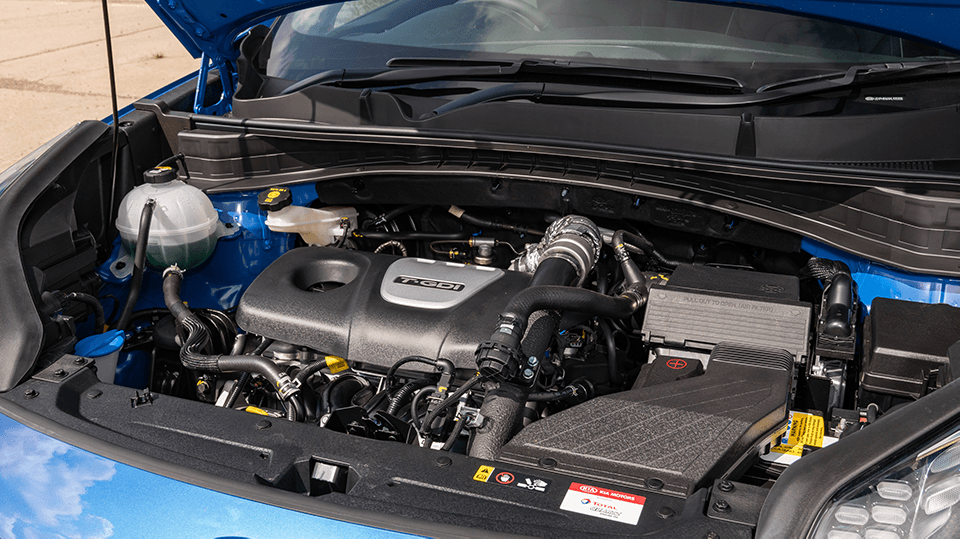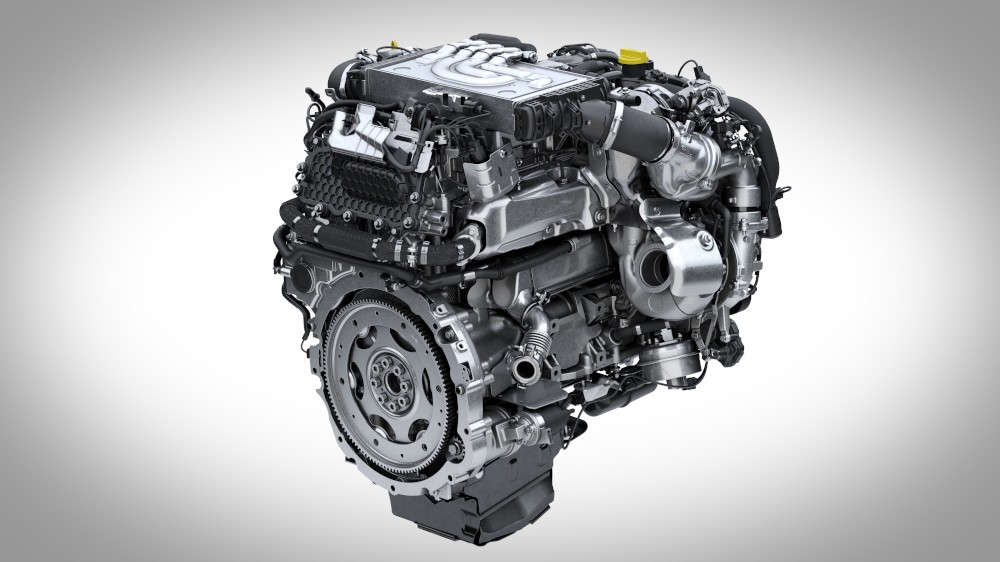“The displacement for the 2.0 L engine is 25% larger than for the 1.6 L engine. This means that when naturally aspirated (without turbochargers or superchargers), the amount of gasoline that can be burned is 25% greater per engine revolution.
Therefore, for the same RPMs, the larger engine can theoretically develop more power, assuming all other factors remain equal for the task, such as adequate air intakes and fuel injectors.”
How do the fuel efficiencies of these options compare?
Comparing the fuel efficiencies of these options sheds light on their respective energy consumption and environmental impact.
Side-by-Side Comparison of Fuel Consumption:
This involves directly comparing the fuel consumption of 1.6 and 2.0 engines under similar conditions. Utilize standardized testing methods like MPG (miles per gallon) or L/100km (liters per 100 kilometers) to provide a clear numerical comparison.
Moreover, highlight the percentage difference in fuel efficiency between the two engine sizes.
Real-World Examples and Case Studies:
Present real-world scenarios where vehicles equipped with 1.6 and 2.0 engines are put to the test.
Additionally, include data from various driving conditions such as city driving, highway cruising, and stop-and-go traffic.
Moreover, case studies could involve road trips, commutes, or even comparative long-term ownership costs based on fuel efficiency.
Highlighting Efficiency-Optimized Scenarios:

Investigate scenarios where one engine size might excel over the other in terms of efficiency. For instance, in a city with heavy traffic, a 1.6-liter engine might fare better due to its lower fuel consumption during frequent stops and starts.
On the other hand, a 2.0-liter engine might offer improved efficiency on highways due to its potential for maintaining lower RPMs at cruising speeds.
Also, explore the impact of additional features like hybrid technology or automatic start-stop systems on each engine size’s efficiency.
In addition these scenarios could shed light on the nuances of engine size choice and how it aligns with various driving patterns.
What factors influence fuel consumption?
Fuel consumption is influenced by a multitude of factors that collectively determine the efficiency and performance of a system or vehicle
Engine Displacement and its Impact on Fuel Efficiency:
Engine displacement, often measured in liters or cubic centimeters, refers to the volume of space the engine’s pistons move through in a single cycle.I
In addition, smaller engines, such as 1.6 liters, generally have lower fuel consumption due to their smaller size and lower internal friction. They require less fuel to generate the same amount of power compared to larger engines.
Technology Advancements and their Influence on Fuel Consumption:
Modern engine technologies like direct fuel injection, variable valve timing, and turbocharging significantly impact fuel efficiency.
Moreover, these advancements optimize the combustion process, resulting in better fuel atomization, reduced energy waste, and improved efficiency.
Additionally, comparing the technology integration between 1.6 and 2.0 engines highlights how each size benefits from specific innovations.
Weight of the Vehicle and Aerodynamics:
Vehicle weight affects the energy required to move the car, directly impacting fuel consumption. Lighter vehicles generally consume less fuel.
Additionally, aerodynamics play a crucial role streamlined designs reduce drag and improve efficiency, affecting both engine sizes similarly.
Driving Conditions and Habits:
Fuel consumption can vary greatly based on driving conditions like city vs. highway driving, traffic congestion, and acceleration patterns.
In addition, driving habits, such as aggressive driving or excessive idling, can also impact fuel efficiency. Comparing how both engine sizes perform in different scenarios provides valuable insights.
What Are The Characteristics of 1.6 Engines?
The characteristics of 1.6-liter engines encompass a balance between power, efficiency, and versatility, making them a popular choice in the automotive landscape.
Explanation of 1.6-liter Engines:
The 1.6-liter engine has a smaller cylinder volume, leading to fewer fuel and air mixture requirements for each combustion cycle.
Moreover, this generally results in improved fuel efficiency. Detailed explanations of the engine’s internal components and how they contribute to efficiency can be explored.
Common Applications and Vehicle Types:
Discuss the types of vehicles where 1.6-liter engines are commonly found, such as compact cars and some smaller SUVs.
Furthermore, explain why manufacturers choose this size for specific vehicle categories and the intended benefits for consumers.
Typical Fuel Efficiency Ratings for 1.6 Engines:
Provide real-world fuel efficiency data for vehicles equipped with 1.6-liter engines. In addition, compare these ratings across different models and highlight instances where certain technologies or design choices lead to variations in efficiency.
What Are The Characteristics of 2.0 Engines?
The characteristics of 2.0-liter engines reveal a blend of performance and efficiency, often offering a combination of power and smooth operation suitable for various driving preferences
Explanation of 2.0-liter Engines:
A 2.0-liter engine offers a larger cylinder volume, potentially allowing for more power output but also potentially consuming more fuel.
Furthermore, explain the engineering considerations that go into optimizing fuel efficiency in 2.0-liter engines.
Common Applications and Vehicle Types:
Discuss the types of vehicles that commonly feature 2.0-liter engines, such as midsize sedans, crossovers, and certain performance-oriented models.
Hence, explore how the increased power potential of these engines affects their efficiency in various contexts.
Typical Fuel Efficiency Ratings for 2.0 Engines:
Provide real-world fuel efficiency figures for vehicles equipped with 2.0-liter engines. Analyze the data to identify patterns and trends that could help consumers make informed choices based on their needs.
What practical factors should consumers consider?

Consumers should weigh a range of practical factors when making a decision, ensuring their choice aligns with their needs, budget, and long-term goals.
Suitability for Different Driving Needs:
Discuss how the choice between a 1.6 and a 2.0 engine depends on various driving requirements. For city commuters, a 1.6-liter engine might offer better efficiency due to frequent stops and starts.
Meanwhile, drivers who often embark on highway trips might find a 2.0-liter engine’s cruising efficiency more beneficial.
Explore specific use cases, such as towing capacity or carrying heavy loads, where one engine size might be better suited than the other due to its power delivery and torque characteristics.
Cost Implications of Fuel Consumption:
Provide a detailed breakdown of how fuel consumption affects the cost of ownership over time. Additionally, use fuel price data and estimated annual mileage to calculate potential savings or costs associated with each engine size.
Moreover, discuss how upfront costs, maintenance expenses, and potential fuel savings should be factored into the decision-making process.
Maintenance and Long-Term Ownership:
Explore the maintenance requirements of both engine sizes and how they might impact long-term ownership costs.
For example, discuss how smaller engines might experience less wear and tear due to lower stress levels, potentially leading to reduced maintenance costs.
In addition, consider aspects like replacement parts, servicing intervals, and any specific considerations consumers should be aware of when maintaining either engine size.
Environmental Considerations:
Discuss the environmental impact of choosing one engine size over the other. Consider factors like emissions, carbon footprint, and how different technologies incorporated into each engine affect their eco-friendliness.
Address the growing concern for fuel efficiency and emissions regulations, and how consumers’ choices can align with sustainability goals.
Resale Value and Market Trends:
Analyze how the choice of engine size might impact the resale value of a vehicle. Investigate current market trends to determine if one engine size is more favored by consumers and if it holds its value better over time.
In addition, consider whether consumer preferences are shifting towards smaller, more efficient engines or if larger engines still hold appeal.
FAQ’s :
Is a 2.0 engine always less fuel-efficient than a 1.6 engine?
Not necessarily. While larger engines may consume more fuel, advancements in technology and driving conditions can influence efficiency. It depends on factors like design and usage.
Which engine is better for city driving: 1.6 or 2.0?
A 1.6 engine is often more efficient for city driving due to its lower fuel consumption during frequent stops and starts.
Can a 2.0 engine be fuel-efficient on highways?
Yes, a 2.0 engine can be efficient on highways due to its potential to maintain lower RPMs at cruising speeds, optimizing fuel consumption.
Do 1.6 engines lack power compared to 2.0 engines?
Not necessarily. While 2.0 engines might offer more power, technology advancements can bridge the power gap, offering both efficiency and performance in 1.6 engines.
Is maintenance more costly for 2.0 engines due to their size?
It can be, as larger engines might require more frequent oil changes and potentially costlier replacement parts. However, specifics depend on the engine’s design and manufacturer.
Will choosing a 1.6 engine save me money in the long run?
It’s possible. While a 1.6 engine can save on fuel costs, consider your overall usage, driving patterns, and maintenance needs when assessing long-term savings.
Which engine size has a smaller carbon footprint?
Both engine sizes can have a reduced carbon footprint when equipped with efficient technologies. Compare emissions data and eco-friendly features for a clearer picture.
Are 1.6 engines better for the environment than 2.0 engines?
Not necessarily. Both engine sizes have the potential to be environmentally friendly, depending on their design, emissions controls, and fuel efficiency technologies.
Do 2.0 engines hold their resale value better?
It can vary based on market trends and consumer preferences. Larger engines might appeal to certain buyers, but factors like fuel efficiency and overall vehicle condition also influence resale value.
Conclusion:
In conclusion, by comparing the fuel consumption of 1.6 and 2.0 engines, we have gained a deep understanding of the intricate factors that influence engine efficiency and how they impact real-world scenarios.
In addition, the significance of fuel efficiency goes beyond mere numbers; it is a reflection of our evolving automotive landscape and the choices we make as consumers.
Through our exploration, we’ve uncovered that engine displacement is just one piece of the efficiency puzzle. Factors like technology advancements, vehicle weight, and driving habits play pivotal roles in shaping how efficiently an engine converts fuel into power.
Moreover, we’ve seen that while 1.6-liter engines offer commendable efficiency for urban environments, 2.0-liter engines shine on the open road, demonstrating that context matters as much as the numbers on the fuel gauge.
Practicality has been our guiding light, showcasing that choosing between these engine sizes extends beyond fuel costs. It’s about aligning your vehicle with your lifestyle, whether that involves city commuting, long-distance travel, or specialty tasks like towing.
Finally, considerations span from upfront costs and maintenance to environmental impact and future resale value. As our awareness of sustainability grows, so does the importance of choosing an engine that complements our desire for efficiency and reduced emissions.

